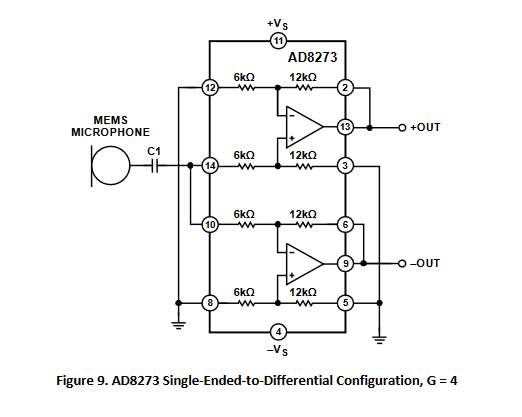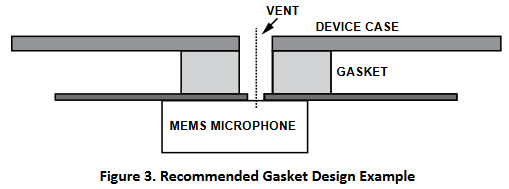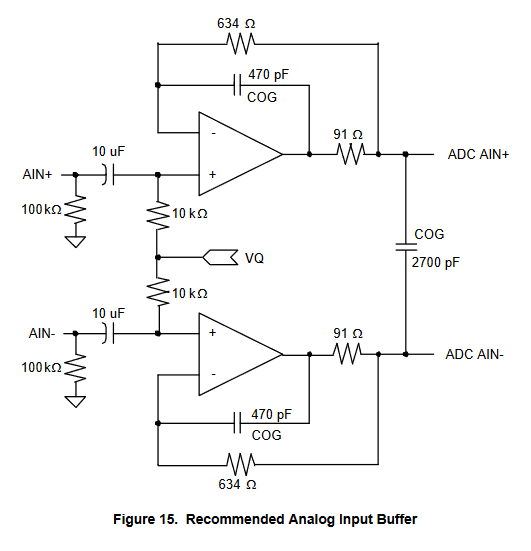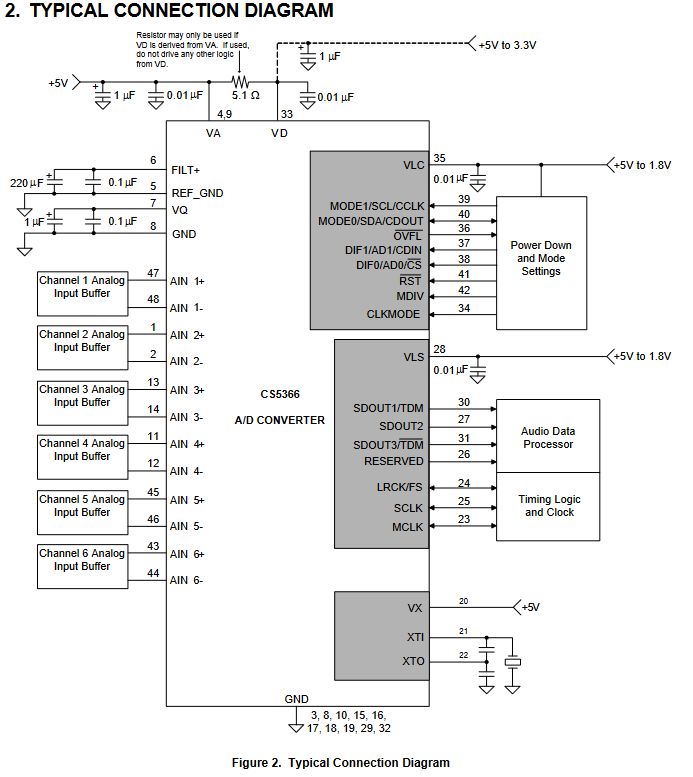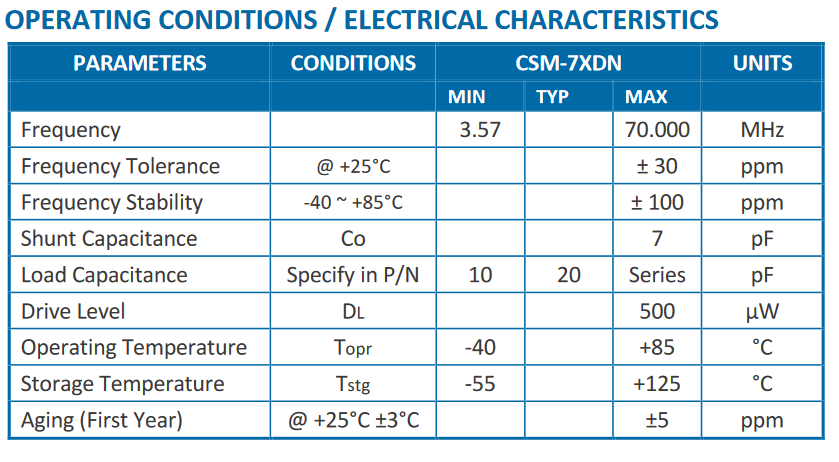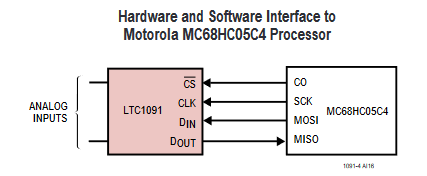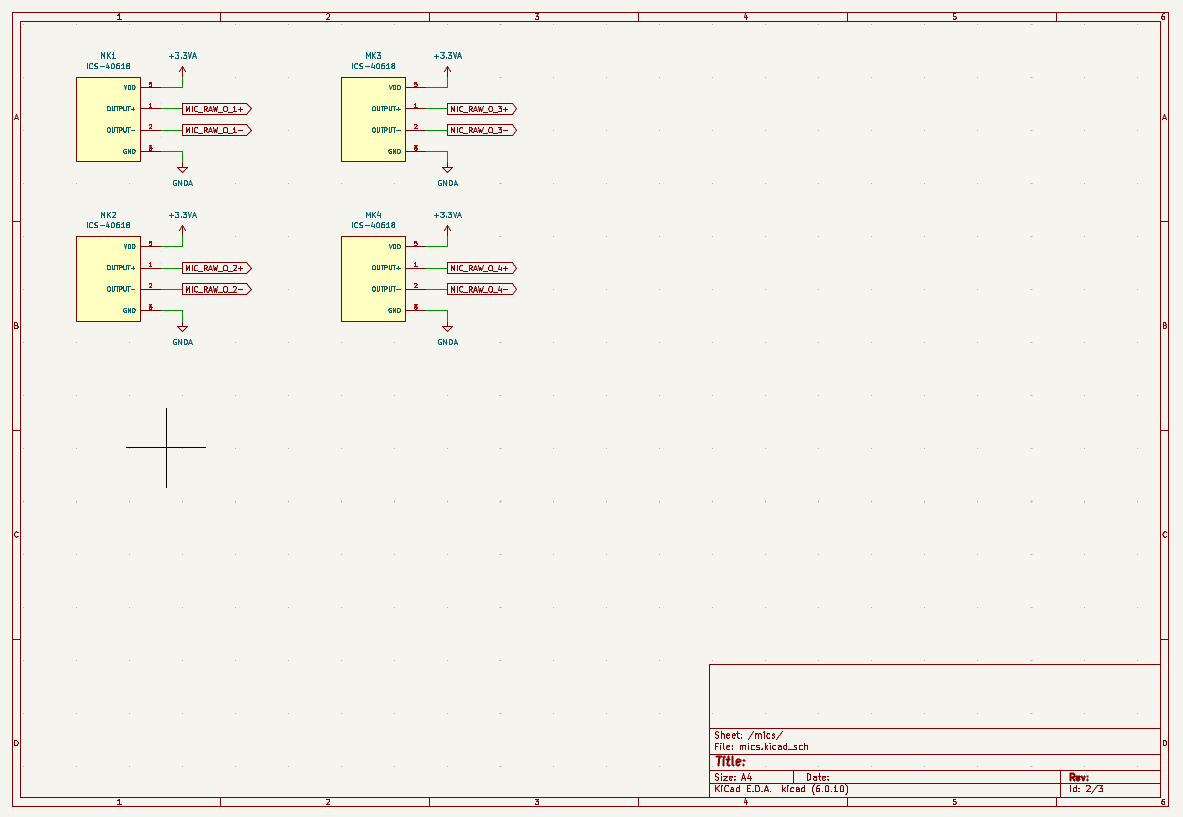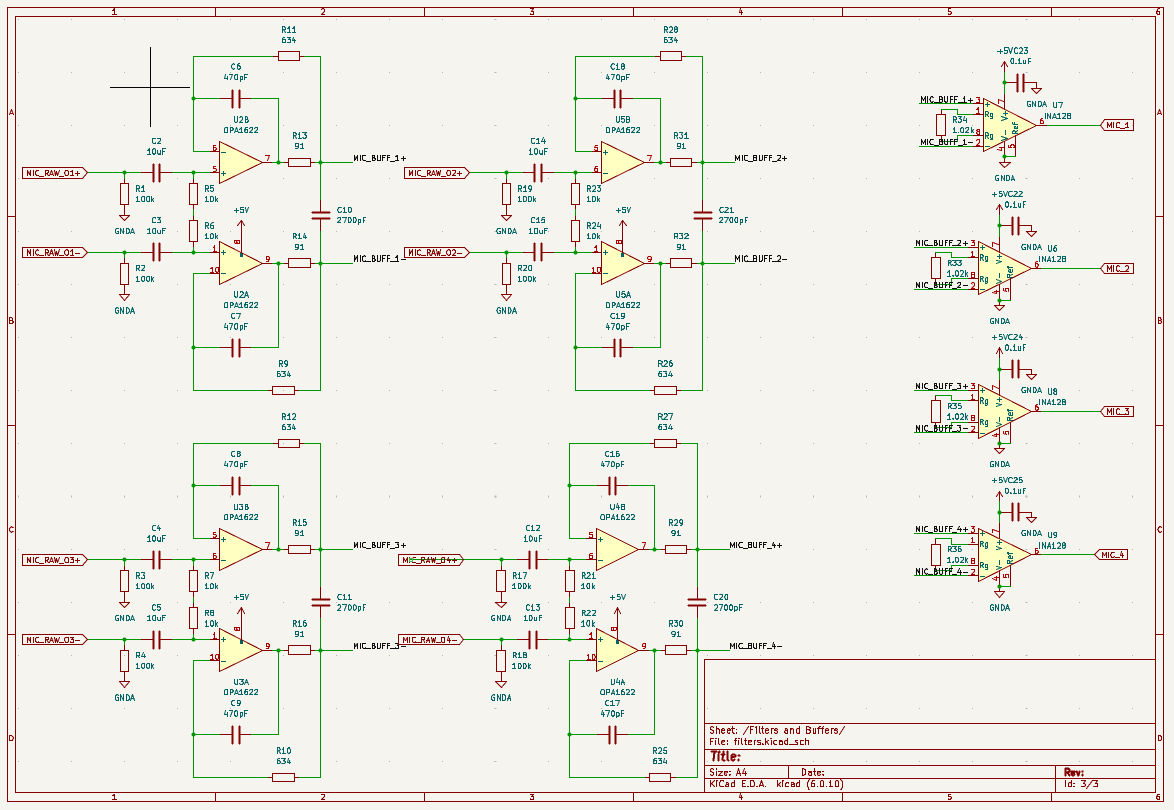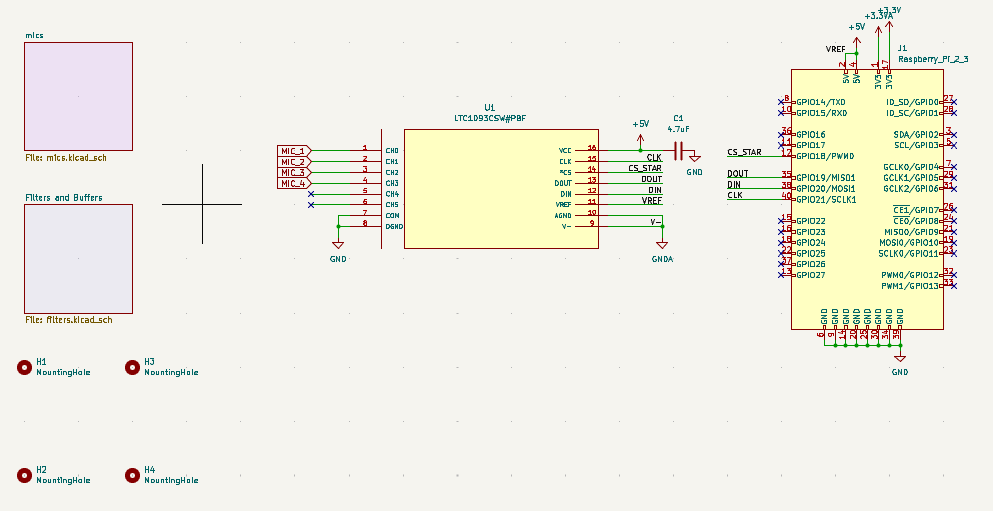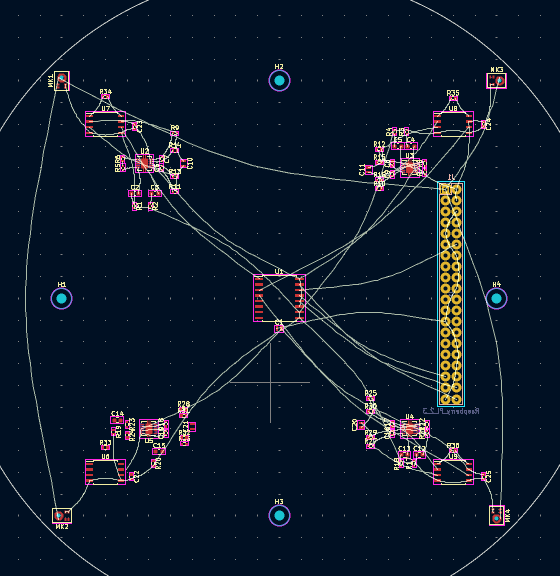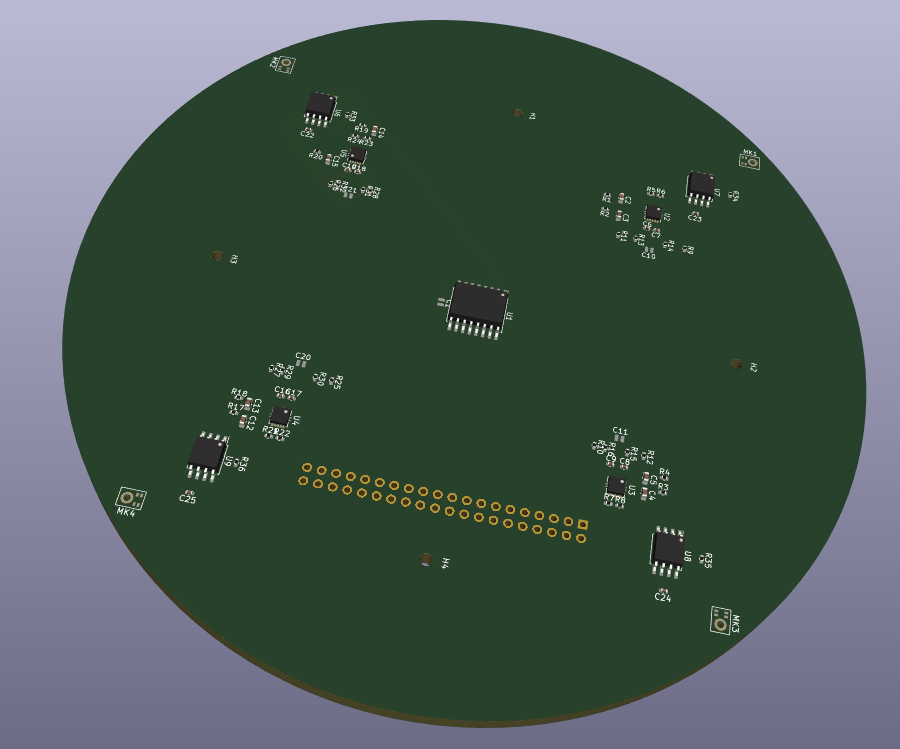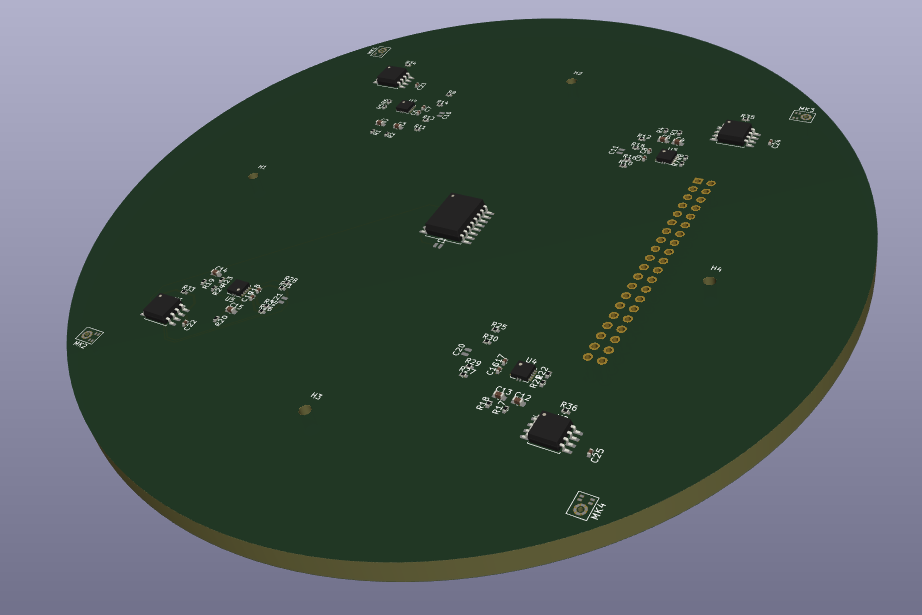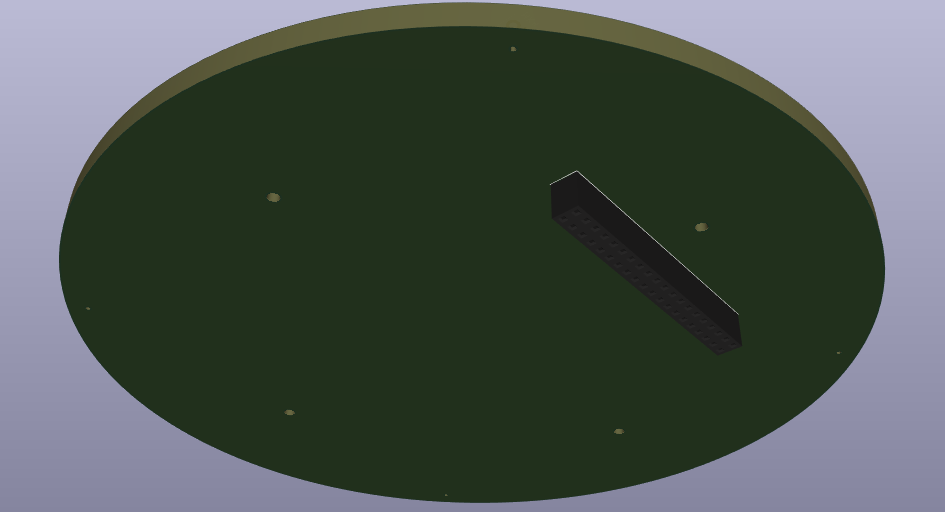Project idea
Microphone array that allows for beamforming.
Requirements
- 4-6 microphones
- Analog filtering
- Analog to digital conversion for on-computer digital filtering
Part Selection
Microphones
Requirements
- Must meet $20Hz - 20kHz$ voice-band frequency range
- Must allow for analog sampling
- Preferably a MEMs microphone
- Since it’s cheaper
- And usually smaller
- Must have datasheets and models because I don’t hate myself
Part selection:
https://www.digikey.com/en/products/detail/tdk-invensense/ICS-40618/6025653
Application notes
From the datasheet  we can see the microphone array datasheet input requirements.
we can see the microphone array datasheet input requirements.
Since we’ll always want to operate in high performance mode, we can pick $3.3V$ for a power supply target voltage. This means that the power supply will need at a minimum to be able to support $0.2mA$ per microphone.
The datasheet also points to some relevant application notes.
AN-1140 – Microphone Array Beamforming AN-1165 – Op Amps for MEMS Microphone Preamp Circuits
The pre-amp circuit specified in the datasheet is
AN-1003 – Recommendations for Mounting and Connecting InvenSense MEMS Microphones
Datasheet suggests avoiding acoustic resonances from a Helmholtz resonator. However, we will just not bother with that and leave the microphones exposed for now. I really don’t want to get into the nitty-gritty of mechanical design. 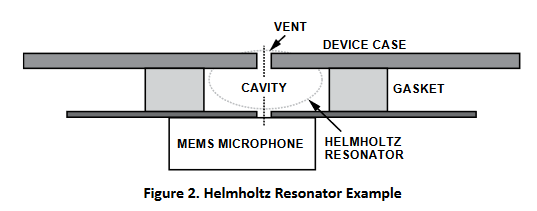
Now we can select an appropriate ADC since these microphones are essentially fine…
ADC
Requirements
- Must meet $20Hz - 20kHz$ voice-band frequency range
- Must have datasheets and models because I don’t hate myself
Part selection:
https://www.digikey.com/en/products/detail/cirrus-logic-inc/CS5366-CQZ/923209
Application Notes
From the datasheet we see that the recommended input buffer looks like:
This pre-amp stage is used in the final design.
From the datasheet we also see that the recommended typical connection diagram is the following:
This means that we require a crystal oscillator that oscillates at a frequency between 1 and 6 $MHz$. I picked something out of the sky at $4MHz$.
https://www.digikey.ca/en/products/detail/ecs-inc/ECS-40-20-5PXDN-TR/827400
After trying to read the datasheet for a few hours I have discovered I’d rather not use this one for arbitrary reasons and not just because I couldn’t figure it out.
I am instead going to use this one. It’s much simpler for simple people like me.
We can see that the typical usage is very simple:
Schematic
To do the schematic we first need to break out the microphones.
We then need to pre-amp the microphones and use an instrumentation amplifier to retrieve the differential mode signal.
The instrumentation amplifier resistor was selected to provide a gain of $50x$
The datasheet is here for the INA128
And now the ADC to raspberry breakout schematic looks as follows:
Layout
Since we want to be able to do beamforming, we can place them along some sort of array pattern, a square with side lengths of $100mm$ is a good start.
We can put the rats-nest down.
The R-Pi breakout is placed on the opposite side to minimize interference of the Pi with the mics.
Routing
Routing is done starting with the local areas, I place components as well as I can. I’m sure this could’ve been done better, but I’m not super experienced with this.
3D model
And now the final model looks like.
